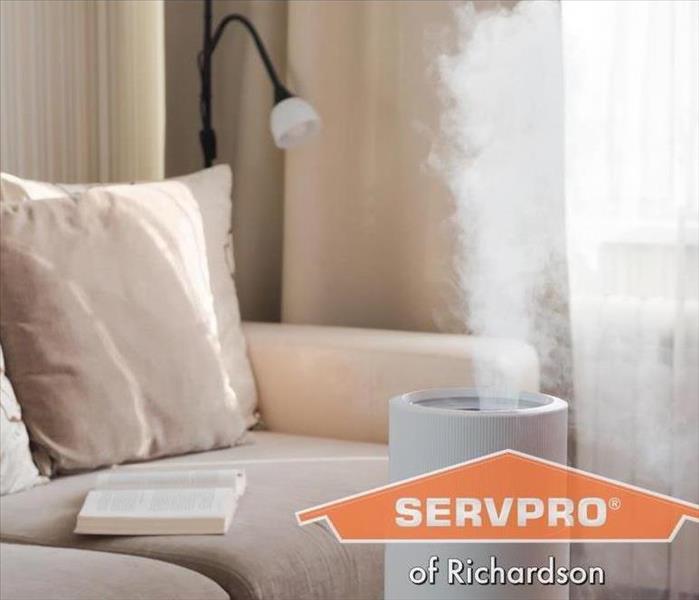Is it Safe to Use a Humidifier in a Carpeted Room?
2/10/2022 (Permalink)
 Mold growth caused by excessive moisture and humidity is a serious problem after a flood or water damage.
Mold growth caused by excessive moisture and humidity is a serious problem after a flood or water damage.
You might be wondering if you can use a humidifier in a carpeted room if you need to boost air moisture levels. Humidifiers are handy appliances that can ease the discomfort caused by dry air. People use them to alleviate dry skin, cold or flu symptoms, or allergies. Additionally, certain house plants will grow better in a humid environment.
However, there’s one major issue that many people forget with humidifiers — mold. Elevated moisture levels in a room can promote mold growth, mildew, and dust mites. And a dirty humidifier can send mold spores into the air.
But is using a humidifier in a carpeted room a good idea? Using a humidifier in a room with a carpeted floor could be a bad idea if air moisture levels are too high. Although an excessive level of humidity may not make your carpet wet, it can create an environment where mold spores thrive. And dampness can stay in a carpet longer than on a hard floor, causing mold to develop, which can be challenging to remove.
Effects of Using a Humidifier in a Carpeted Room
Mold thrives in damp, cool indoor environments. According to the Environment Protection Agency (EPA), mold frequently grows on carpets, wood, paper, food, and insulation. Because mold spores are virtually impossible to eliminate, controlling indoor moisture is vital for preventing the growth of mold.
One of the dangers of using a humidifier in a carpeted room is that the mold grows unseen. For example, the EPA says that the underside of carpets and rugs are common locations of hidden moisture and mold growth.
Of course, it’s not just humidifiers that cause excess moisture in the air. Other reasons for high humidity levels are steam radiators, cooking, showering, and dryers.
Experts agree that indoor relative humidity should not exceed 60 percent. The ideal relative humidity is between 30 and 50 percent.
Can a Humidifier Cause Mold in a Carpet?
A humidifier can be unsafe to use in a carpeted room because it can harbor mold spores and hide black mold patches. A 2020 study in the journal Building and Environment reported that fungal growth occurs in carpet fibers under elevated moisture conditions.
Fungal allergens and other microorganisms are commonly found in carpet fibers, and carpets hold more moisture than the surrounding room air.
The study concluded that high relative humidity is one of the most crucial factors contributing to a carpet’s fungal growth.
In addition, it isn’t safe to place a humidifier on a carpet because it increases the risk of being knocked over.
Mold growth caused by excessive moisture and humidity is a serious problem after a flood or water damage. SERVPRO specializes in mold remediation to quickly dry out carpets, furnishings, and building structures. Acting fast after a flood or burst pipe is the best way to prevent mold growth.
If your building has suffered water damage, contact us today at (972) 690-1414 to arrange for our team of experts to assess your situation. Richardson mold remediation services can help prevent issues caused by excessive humidity, moisture, and mold growth.






 24/7 Emergency Service
24/7 Emergency Service